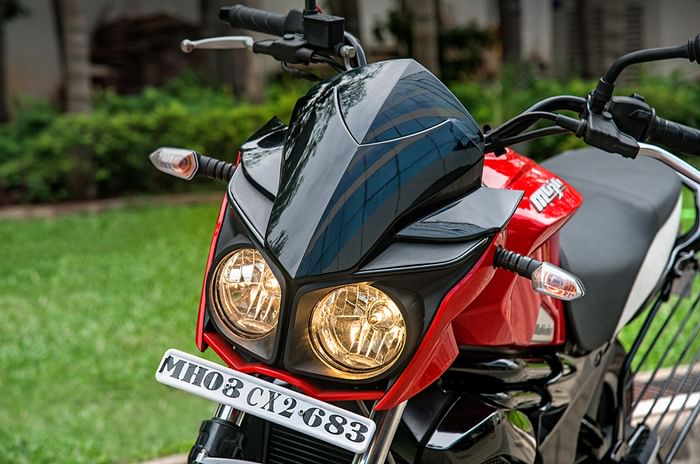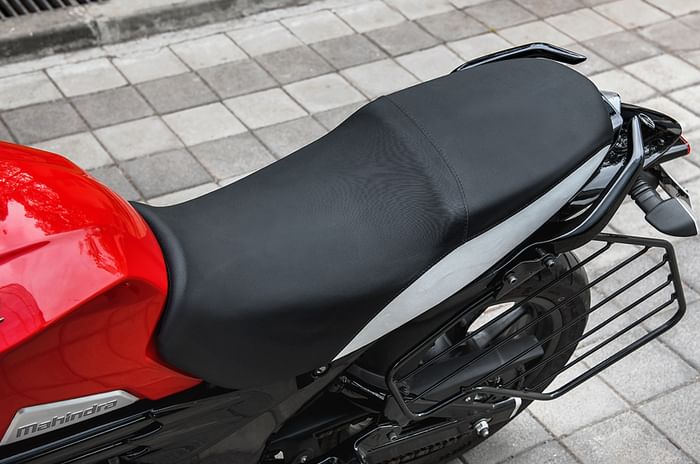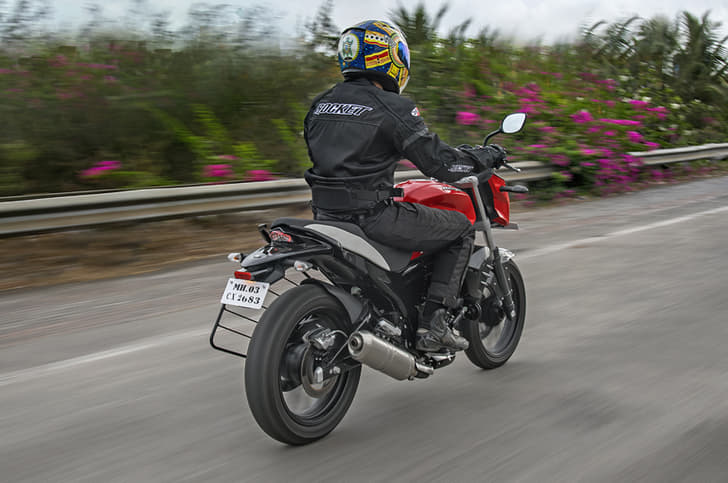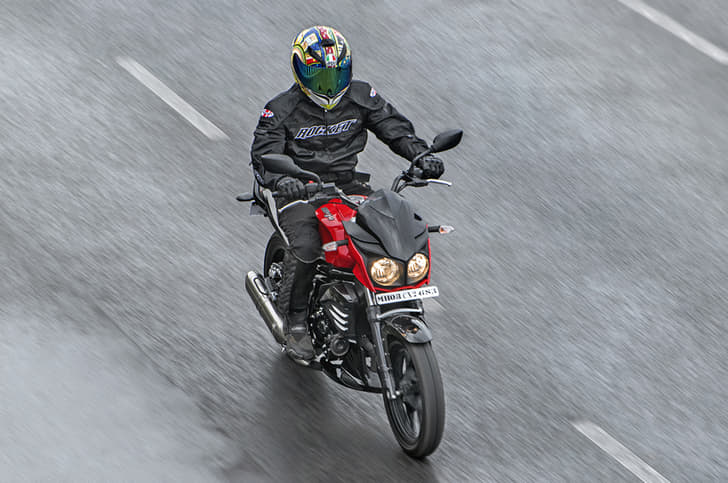What is it?
Mahindra calls it the Mojo UT 300, the UT in which stands for Universal Tourer. It sits alongside the company’s XT 300 (Xtreme Tourer) while being a fair chunk cheaper. This is not something we haven’t experienced before in the automotive industry - there are many bikes and cars that offer you little less bang for little less of the buck. In the case of the UT 300, most of the Mojo highlights remain, but there are also a significant number of changes that have come into effect to allow the price reduction.
Identical twins?
While the UT 300 may look very similar and share the same silhouette as the more-expensive XT 300, it does have its differences. Firstly, the single-tone colour scheme is different to the dual tone treatment on the XT 300. Moving to the front, it has a redesigned headlight cowl which is missing the eyebrow LED DRLs seen on the XT. The bike also has a simpler, more cost-efficient front mudguard with exposed bolts that are otherwise hidden on the XT 300’s fender. Another change is a conventional fork that replaces the golden-coloured upside-down unit.
Coming to the (right) side, the UT looks exactly like its sibling. It has the same blacked-out engine, belly pan and large 21-litre fuel tank. The bike also gets the same aluminium finished upswept muffler, however when you move towards the rear of the motorcycle the first thing you notice is the missing muffler on the left side of the bike. The twin muffler set-up was a feature of the Mojo that many loved, but cost reduction made Mahindra drop it. The UT 300 also features a black tail section on both its colour options (red and blue) while the XT gets it matched to the body colour.

Still got the Mojo?
Powering the UT 300 is the same 294.7cc single-cylinder, liquid-cooled engine. This time around, though, it uses a carburettor instead of a fuel injection, resulting in a substantial dip in power figures. The Mojo UT 300 makes 23.1hp and 25.2Nm of torque, down from the fuel-injected XT 300's 27hp and 30Nm. Power-to-weight ratio thus dips from 145.9hp/tonne to 127.9hp/tonne while the torque to weight ratio takes an even bigger hit, dropping from 162.1Nm/tonne to 139.6Nm/tonne. However, the UT 300 uses the same smooth and precise six-speed gearbox seen on the more-expensive Mojo variant.
There are small differences in the UT 300’s dimensions as well. Its wheelbase is down by 5mm (to 1,460mm), the reason for which is the reduction in fork length. Ground clearance has subsequently gone down by 8.5mm to 165mm. However, the overall length has now increased by 15mm thanks to a longer rear seat and fender – a change made to increase room for the pillion on board. The UT 300 has shed 4.5kg over the XT 300 and that’s not surprising given the single exhaust, but the kerb weight figure still stands at a hefty 180.5kg.

Universal tourer?
To begin with, let me tell you that the motor continues to be smooth, but there is a small, yet noticeable drop in refinement as the revs rise and vibrations build up in the tank and footpegs. The engine detuning also reflects in the performance. The engine doesn’t feel quite as free-revving and while there still is a tangible surge above 5,000rpm, it builds speed slower than before. In our tests, the UT managed to do 0-60kph in 3.70sec while, the XT did it in 3.59sec. The gap only got bigger as the speeds got higher, 0-100kph took 10.79sec on the UT while, the XT managed it in 9.55sec. These don’t look like large gaps, but you can tell that the effortless nature of the engine, especially on the highway, has been compromised to some extent.
Expectedly, the UT 300 did manage to return better fuel-efficiency figures than the XT. City efficiency has climbed from the previous 28kpl to 29.1kpl in the city while highway figures have risen from 33.4kpl to and 38.7kpl. For those of you concerned, the Mojo UT 300 still sounds familiar, if not as deep, and the single pipe also pops and burbles on a closed throttle.
The riding position continues to be very relaxed with a high-set handlebar and a footpeg position that allows you to comfortably stand on the pegs and stretch out from time to time. One of our complaints with the old Mojo was its soft seat that got quite painful after a few hours in the saddle. This has been addressed with new, firmer material on both the UT and XT. It’s still not the best seat out there, but it’s definitely a big improvement.

The simpler new fork has been tuned well to absorb bumps and the overall ride quality is comfortable, if slightly set on the frim side. Ultimately, this bike retains the Mojo’s famed ride quality to a good extent, but you can’t help but feel that the XT feels slightly plusher on poor surfaces.
The cost cutting drive has also taken away the excellent Pirelli Diablo Rosso II tyres and the UT 300 gets bias-ply MRF Zappers instead. The rear tyre down from a 150 section rear to 140 and both tyres have a lower speed rating (210kph vs 270kph) than the Pirellis. However, these tyres work well enough in the dry and we didn’t have any complaints with the grip levels. As before, the Mojo is willing to take on long sweepers at speed, but it feels awkward and disconnected when you start pushing it hard around a set of corners.
Finally, we get to the brakes. These have not been changed and they continue to lack enough bite and require heavy input to get working. Compounding this issue, the non-adjustable brake/clutch levers are set too far out and don’t offering enough leverage. Even my colleague with his XL-glove size was left using his fingertips - adjustable levers would be great on both Mojos.
Should I buy one?
Mahindra has priced the UT 300 at Rs 1.49 lakh (ex-showroom, Delhi), making it exactly Rs 25,000 cheaper than the fully-specced Mojo XT 300 which costs Rs 1.74 lakh (ex-showroom, Delhi). This is a significant price drop and it moves it straight into the category of the Bajaj Dominar and Royal Enfield Classic 350. But along with the price drop also comes a considerable dilution of many of the factors that made the original Mojo quirky, yet likeable. If you’re solely interested in the Mojo’s unusual design, the UT 300 is worth the money saved. But most potential Mojo customers consider the Mahindra for its unique big-bike feel and smooth, effortless riding experience. In that case, the XT 300 is still the one to have.














































